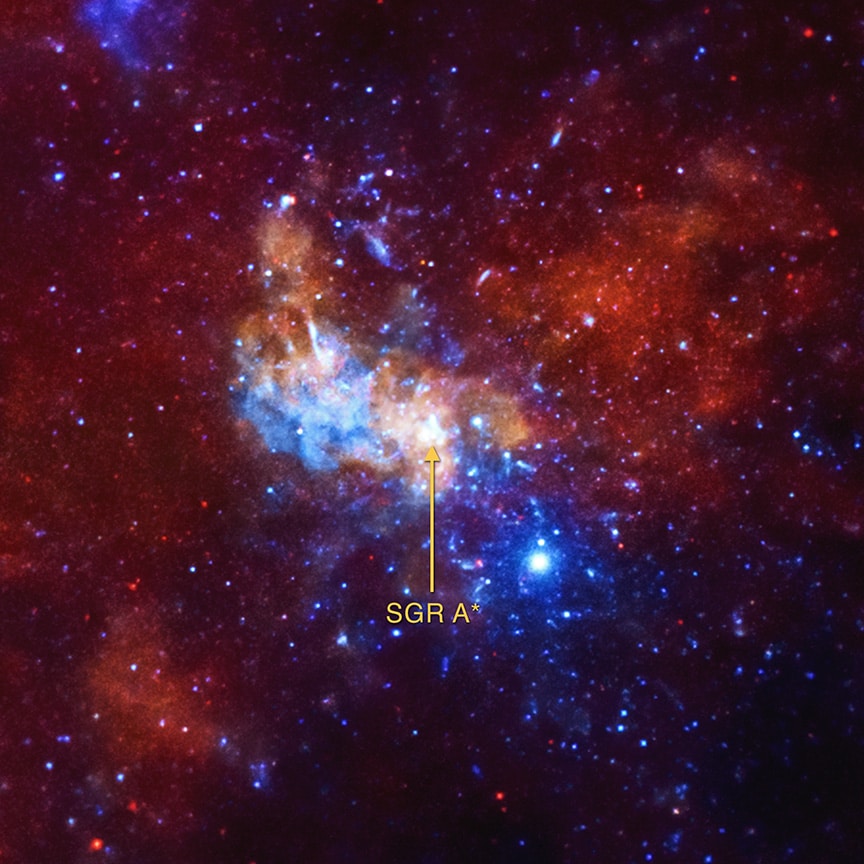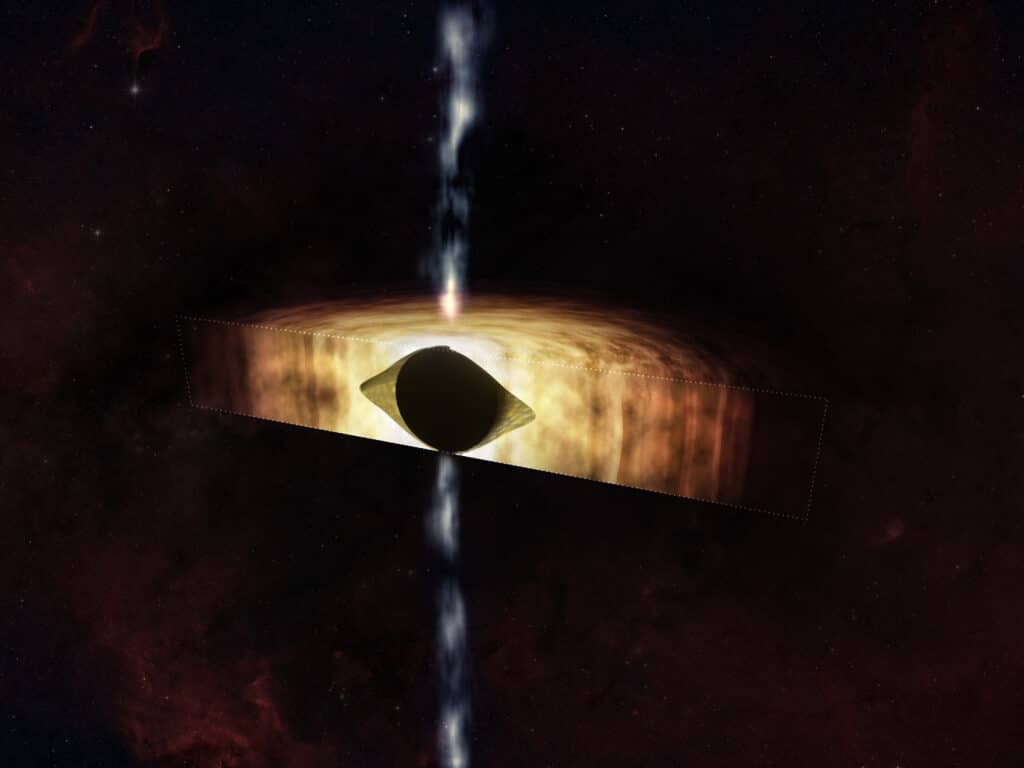The supermassive black hole at the heart of our Milky Way galaxy is spinning almost as fast as theoretically possible, according to new measurements by astronomers. This rapid spin rate helps explain past energetic outbursts and has implications for outflows that could impact star formation across the Galaxy.
Black holes can spin at rates up to nearly the speed of light, and this rotation impacts the space and matter around them in profound ways. Faster spin squeezes space more tightly and enables more energy to be extracted from the black hole itself to potentially drive jets and other outflows. Therefore measuring black hole spin provides key insights into these extreme objects at the centers of galaxies like our own.
Sagittarius A* (Sgr A*), the name given to the 4 million solar mass black hole, is spinning at about “60% of the maximum possible value,” according to researchers. This extremely rapid spin speed causes the fabric of space and time itself to warp around the black hole into the shape of an elongated football.
Connecting Spin to Observable Power
The research is based on a simple but powerful empirical relationship linking the luminosity of black hole outflows to the brightness of inflowing matter swirling around the black hole. Essentially, the more rotational energy that can be tapped, the brighter the outflow and dimmer the inflow. “A spinning black hole is like a rocket on the launch pad,” explained Dr. Biny Sebastian, co-author and postdoctoral researcher at the University of Manitoba, in a statement. “Once material gets close enough, it’s like someone has fueled the rocket and hit the ‘launch’ button.”
Study authors used Chandra X-ray Observatory data on the X-ray emission from hot gas flowing inward and Very Large Array radio data on the brightness of jets erupting outward. Comparing the brightness of each using established techniques gives spin rate. “It’s about connecting the energy released to what’s possible given relativity and observed matter properties,” said lead researcher Dr. Ruth Daly, Assistant Professor of Physics and Astronomy at Penn State University.

For Sgr A*, the very bright observed outflow compared to the fainter inflow implied a high spin value of 60% of the limit set by light speed. This spin measurement agrees with some previous theoretical predictions but disagrees with others that suggested a slow or non-spinning black hole. The high spin confirms that the space around Sgr A* is severely warped and means its massive gravity has a stronger impact on surrounding stars and gas clouds than slower spin would produce.
The spin value translates to an estimated 6 million times the mass of the Sun that could be converted from the rotational energy of Sgr A* and used to power jets or other outflows.
Powerful Outflows Impact the Galaxy
Most importantly, the rapid spin now measured can drive energetic outflows when ample gas is present. “A spinning black hole is an important source of energy. Narrow beams of material and energy can be produced and profoundly affect gas flows feeding star birth across the Milky Way,” said Dr. Megan Donahue, researcher at Michigan State University and project co-author.
Evidence suggests such an outflow occurred from Sgr A* in the relatively recent past. The distinctive “Fermi bubbles” of high energy particles billowing above and below the Milky Way are thought to be remnants from an eruption fed by the black hole’s spin power when more gas was close by in its active, flaring state.
“Measuring the spin of our black hole is an important test of this scenario for the Fermi bubbles,” concluded Donahue. Because Sgr A* appears quiet now with minimal matter falling in, the rapid spin pegged by these measurements has gone largely untapped and the outflows remain relatively calm. That could dramatically change in the future.

Star Formation Impacts
Most galaxies host similarly massive central black holes spinning at high fractions of the maximum rate. Given enough surrounding matter, such spin can drive repeating bellicose outbursts. “Jets powered and focused by the galaxy’s spinning giant black hole can profoundly influence star formation across that galaxy for billions of years,” said Donahue.
In the case of our Milky Way, stellar patterns and the presence of the Fermi bubbles themselves suggest that Sgr A* indeed erupted more vigorously in the past when more gas was present. Such bursts starved portions of the galaxy of needed gas, shutting down star birth. These new spin measurements back the notion that our resident supermassive black hole repeatedly shaped Milky Way stellar populations and structure over cosmic time through its outflow impacts.
As Dr. Daly summarized regarding the central beast, “It’s quiet now, but our work shows that it will give an incredibly powerful kick to surrounding matter in the future, affecting our galaxy over extremely long timescales.”
The research paper is published in the journal Monthly Notices of the Royal Astronomical Society.











